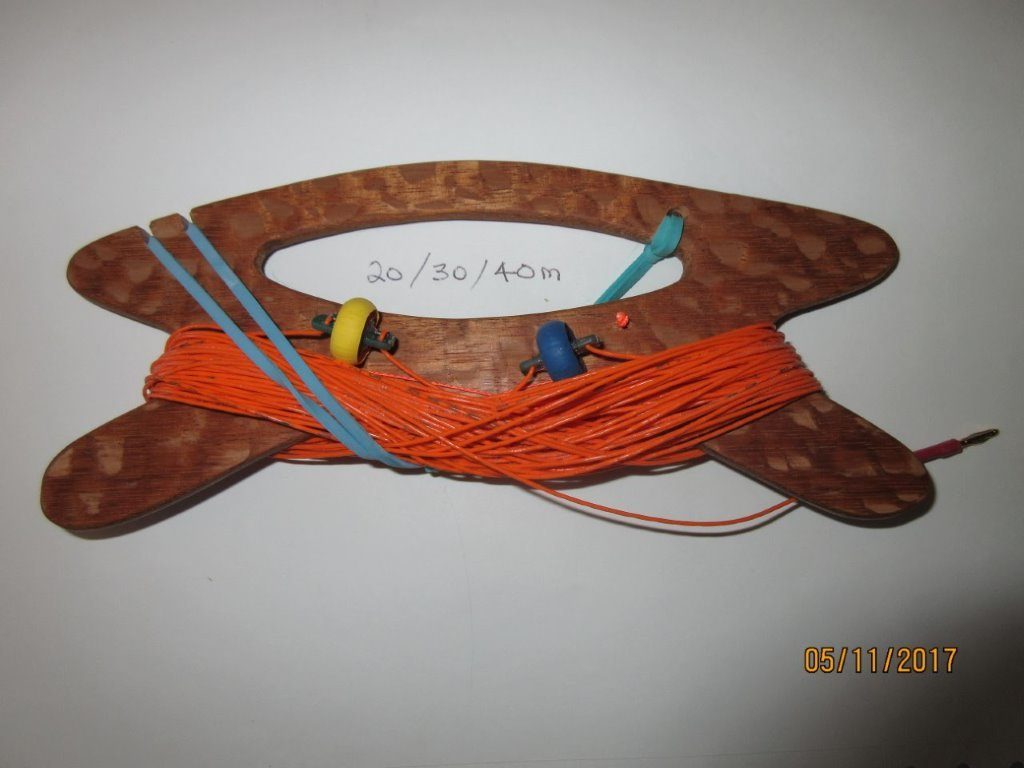There are a lot of different types of SOTA operators out there. Some like to bring a lot of equipment, some like to bring very little. For most, it depends on the type of activation they’re doing, or perhaps what equipment they have. Personally, I like to do a little bit of everything, including lightweight minimal equipment.
I’ve conversed with Fred Maas, KT5X, a number of times on some of the incredible things he’s doing to minimize his SOTA setup. He has a great trapped end-fed half-wave (EFHW) setup he’s come up with for an antenna. It uses two small traps to get multi-band function out of a single wire. Traps certainly aren’t a new thing in the ham world, but tiny traps like his are certainly an original concept. After getting info on how to build my own, I collaborated with him to design tiny PCBs for the traps. After feedback from him and a couple of revisions, we had a functional WS0TA trap PCB. And this thing is tiny!
Feeding this antenna wire with traps requires matching a very high impedance, since it’s fed from one end. To do that, I’ve been experimenting with my own ideas for a miniature transformer, not having settled on one yet. But Fred has been regularly using home-brew transformers in his SOTA operations. He’s an extremely active SOTA participant and Association Manager for New Mexico (W5N). I find his home-brew innovations well worth sharing.
Here’s a PDF of a presentation he did on his SOTA equipment. Enjoy!
UPDATE: Fred requested I post the following additional information about the traps. Definitely useful!
A commercial manufacturer would not be satisfied with them. Commercial ones can produce an impedance resistance in excess of 75,000 ohms. These may produce around 10,000 ohms, but it is enough.
Warning: if the actual frequency of the trap isn’t right, the wire will be very hard to impossible to tune as wire lengths become interactive. It is best if you can actually measure the tuned frequency of the trap. They should be tuned a little below the frequency of intended use. for 20M, for example, the trap might tune around 13.9 mhz.
The exact nature of the balun that you use will change the precise lengths of the antenna wires. You will have to tune your antenna using your installation, your mast, exactly how high above ground, your choice of wire with its velocity factor, everything will impact it. The broadband version designed by Parfits works, but the tunable version by AA5TB and later kitted by KI6J handles situational variabilities better. I use only the larger half of the two sections in the Varicon capacitor (available from eBay searches) to provide finer easier tuning. It will readily tune 17-40, but getting little enough residual capacitance for 15 can be challenging 😉
The traps can use ANY value of inductance or capacitance. More inductance and less capacitance makes for a better trap, and makes the overall wire for 40M shorter thus easier to deploy on a SOTA. With an EFHW there is only one trap per band, half the loss involved in making a trapped centerfed. The high current point of an antenna is where the radiation is. A centerfed antenna requires a feedline. With an EFHW, you may not need to carry, or support with your pole, any coax at all. I use no feedline. With an EFHW you need no counterpoise (which is lossy and annoying). Our measured loss when using these traps is only about one DB total with several traps, and nothing discernable on the highest band.
Here is what I am using for my traps.
20M trap: T-50-2 core, 39 turns of #26, 15pF SMD cap
30M trap: T50-2 core, 38 turns of #26, 33pF SMD cap
The SMD caps were obtained on ebay, in the order of 100 for $3. They are 500v NPO type, that’s important. I have seen 1000v NPO which might be even better, but I have never fried a cap.
The SMD is mounted on a little strip of PC board, which also creates the simple strain relief, see photo.
TX <81:1 balun>----------------------------------------<20M trap>-------------------------<30M trap>-----------------------------------
32-4 5-6 8-0
73, Fred KT5X (aka WS0TA)

